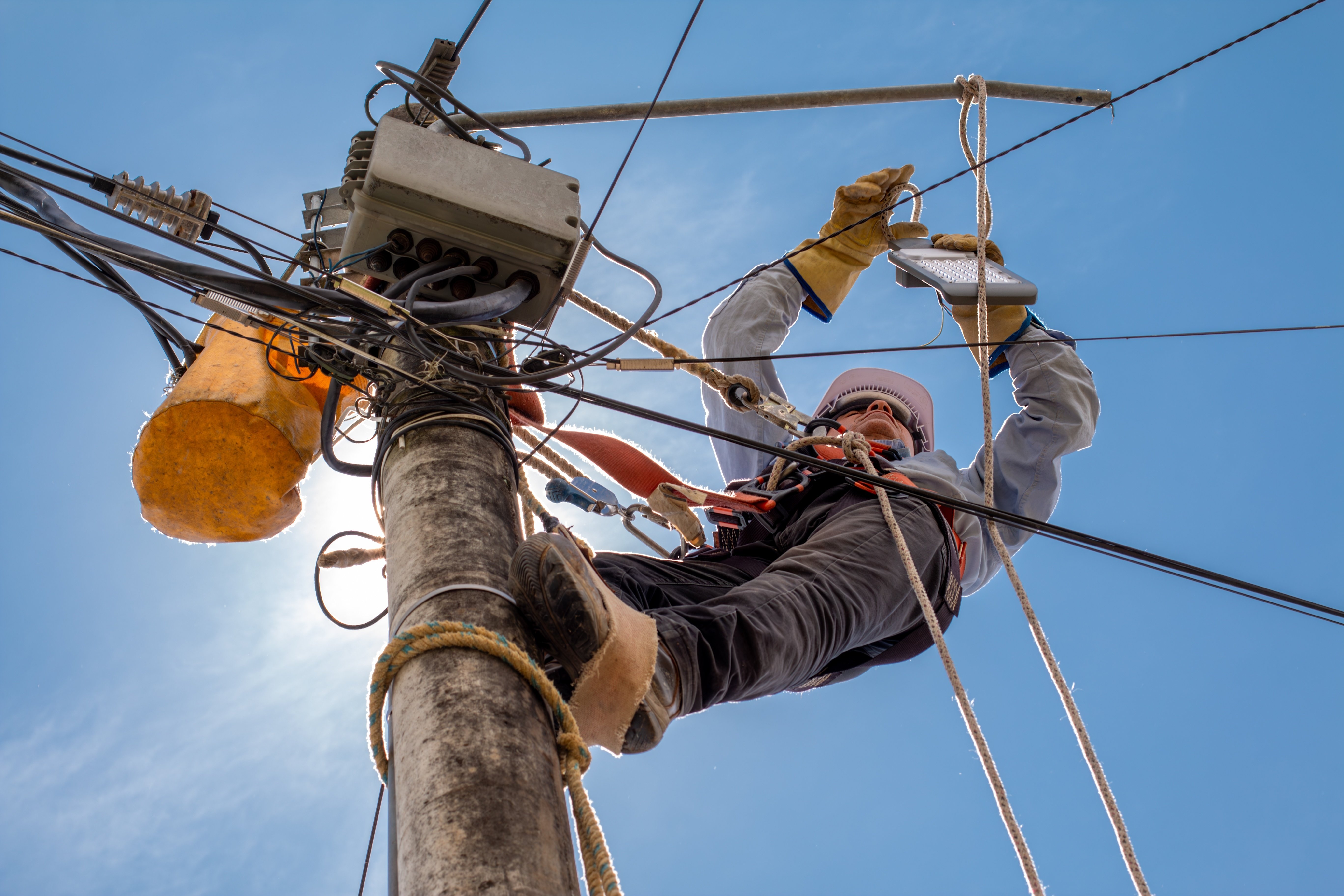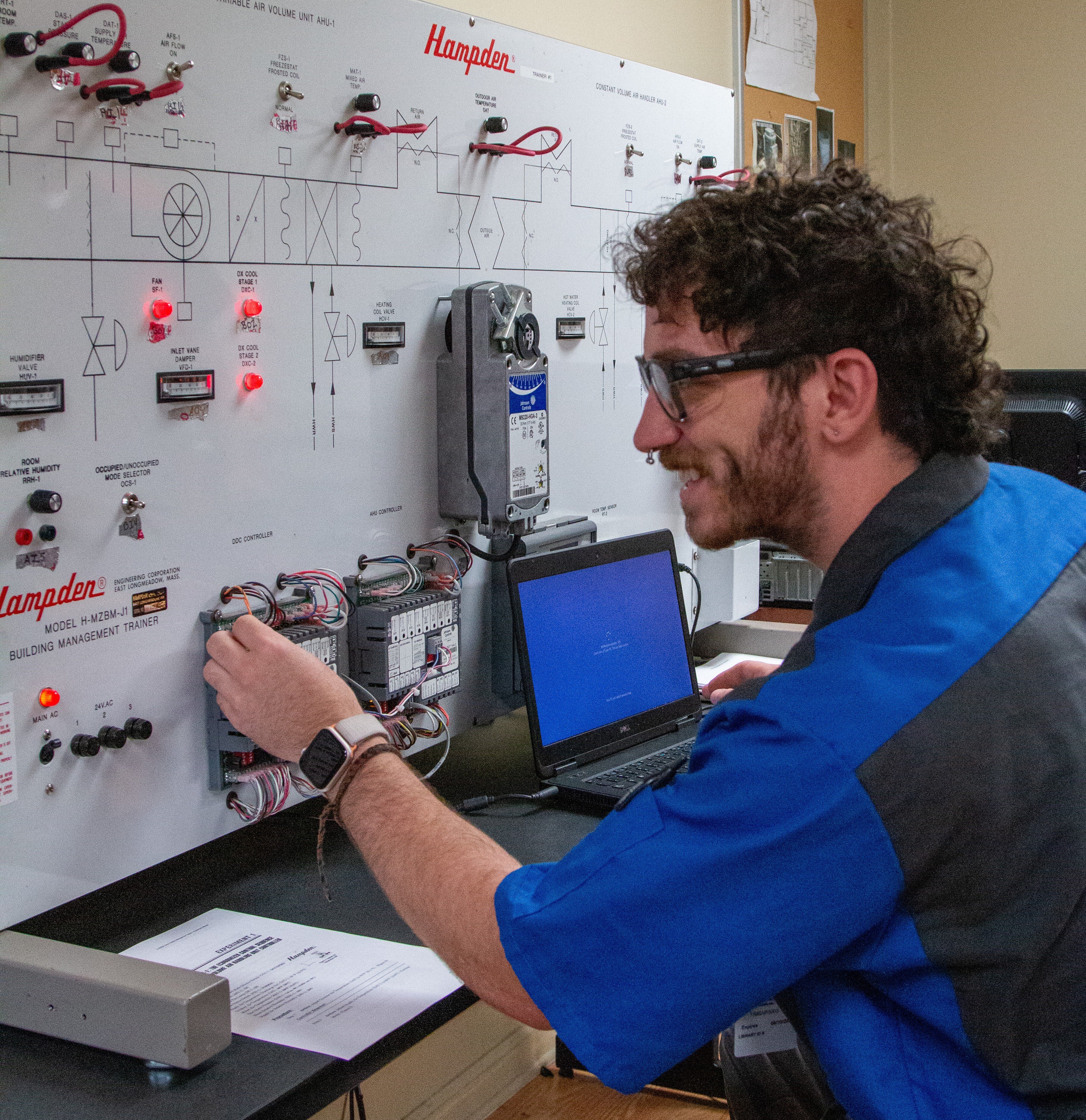Journeyman Electrician: A Comprehensive Guide

Ever wonder who installs the electrical systems in new homes, troubleshoots malfunctioning circuits, or ensures that massive industrial equipment has the power it needs to run safely? More often than not, a journeyman electrician is the skilled professional behind the scenes making it all happen.
Becoming a journeyman electrician is more than just flipping switches and connecting wires, it’s a licensed career path that combines technical expertise, hands-on experience, and code-based knowledge. If you’re someone who enjoys solving problems, working with your hands, and following a clear progression toward professional advancement, the electrical trade may be a perfect fit.
Quick Links
-
What is a Journeyman Electrician?
-
How to Become a Journeyman Electrician?
-
How Many Hours to Become a Journeyman Electrician?
-
How Long Does it Take to Become a Journeyman Electrician?
What is a Journeyman Electrician?
A journeyman electrician is a certified and licensed tradesperson qualified to install, maintain, and repair electrical systems without direct supervision. Journeymen typically work on residential, commercial, or industrial job sites and are trained to read blueprints, follow electrical codes, and use a wide range of tools and testing equipment.
What Makes Them Different?
Journeymen stand in the middle of the professional hierarchy within the electrical field. They are beyond the apprentice stage and can perform complex tasks independently, supervise less experienced workers, and contribute to large-scale electrical projects. However, they are not authorized to operate as independent contractors or pull permits for every job, they must often work under the guidance of a master electrician or a licensed electrical contractor.
What truly sets journeymen apart is their combination of experience and responsibility. They can troubleshoot systems, make code-compliant decisions in real-time, and ensure safety protocols are followed, all without the need for constant oversight.
What Is Above and Below a Journeyman Electrician?
Understanding the career ladder in the electrical trade can help clarify where a journeyman fits in:
Apprentice Electrician (Entry-Level)- No license required
- Works under direct supervision
- Completes classroom instruction and hands-on training
- Cannot work independently
- Licensed by a state or local agency
- Can work independently
- May supervise apprentices
- Cannot typically run their own business or pull permits for large-scale projects
- Often requires several years of journeyman experience
- Can pull permits for any job
- May operate their own electrical contracting business
- Often responsible for designing electrical systems and ensuring full code compliance
This structured pathway allows for steady career growth based on experience, education, and exam qualifications.
How to Become a Journeyman Electrician?
If you’re wondering how to become a journeyman electrician, the process typically follows a multi-step pathway that includes education, training, and certification.
Step 1: Meet Basic Prerequisites
Most states require you to be at least 18 years old and hold a high school diploma or GED. Having a foundation in math, especially algebra, and basic science is helpful, as is mechanical aptitude and an ability to work safely in physical environments.
Step 2: Start with Technical Education (Optional but Recommended)
While not required in all jurisdictions, many aspiring electricians begin with a technical training program or trade school education. These programs typically offer coursework in:
- Electrical theory and systems
- OSHA safety protocols
- Circuit design and installation
- Residential and commercial wiring
- Local and national electrical codes
- Blueprint reading and drafting
Completing this step can help build foundational knowledge and may reduce the number of classroom hours required during an apprenticeship, depending on state regulations.
Step 3: Enter an Electrical Apprenticeship
This is the most critical phase in becoming a journeyman. An apprenticeship allows you to earn while you learn, combining paid, on-the-job training with formal classroom instruction.
Apprenticeships are typically offered through:
- Local unions (e.g., IBEW - International Brotherhood of Electrical Workers)
- Electrical contractors
- Trade associations or non-union sponsors
- State-registered training programs
During this period, apprentices gain hands-on experience in real job settings, performing tasks like running conduit, installing lighting systems, setting up circuit breakers, and troubleshooting faulty wiring.

How Many Hours to Become a Journeyman Electrician?
One of the most commonly asked questions is: how many hours for journeyman electrician licensing?
While requirements vary by location, most states require:
- 8,000 hours of on-the-job training (equivalent to roughly 4 years of full-time work)
- 500 to 1,000 hours of related classroom instruction
These hours ensure that apprentices are well-rounded, code-aware, and competent in a range of real-world electrical tasks. Your apprenticeship program will usually track these hours and verify completion before you are allowed to sit for your journeyman exam.
How Are the Hours Completed?
Your apprenticeship schedule will typically include:
On-the-Job Training Hours
Performed under the supervision of a licensed electrician, these tasks may include:
- Wiring new homes or businesses
- Installing service panels and breakers
- Setting up lighting systems
- Repairing outdated or unsafe wiring
- Following blueprint layouts and wiring diagrams
- Conducting system testing using multimeters and other tools
Apprentices gradually take on more responsibility as they gain experience, and their wages typically increase at specific benchmarks (e.g., every 1,000 or 2,000 hours).
Classroom Instruction Hours
Structured classes are designed to build knowledge in:
- Electrical theory and mathematics
- National Electrical Code (NEC)
- Blueprint reading
- Grounding and bonding
- Power distribution systems
- Safety training (OSHA, NFPA 70E, etc.)
Some states may require you to pass periodic exams or assessments as part of your classroom curriculum to remain in good standing within your apprenticeship program.
How Long Does it Take to Become a Journeyman Electrician?
If you're asking how long does it take to become a journeyman electrician, the short answer is usually 4 to 5 years. That time frame includes both your on-the-job and classroom training hours, as well as any prep time needed to pass your licensing exam.
However, this timeline can vary depending on:
- State requirements – Some jurisdictions require more hours or additional coursework
- Full-time vs. part-time apprenticeship – Working fewer hours per week will extend the timeline
- Credit from education – If you’ve completed a technical school or pre-apprenticeship program, you may be able to reduce required hours
- Exam readiness – Some individuals require additional time to study and prepare for the journeyman exam
Once your required hours are completed, you’ll apply to take the journeyman licensing exam. Passing this exam, often a combination of multiple-choice questions, code references, and practical scenarios, officially earns you journeyman status.
Becoming a journeyman electrician is a clear, structured path that combines real-world experience with technical expertise. The journey requires discipline, dedication, and a strong commitment to learning, not just in the classroom, but every day on the job. To learn more about electrician programs, visit ATI's Electrical Program.
Industry Knowledge
Welcome to the Advanced Technology Institute's Blog, your resource for industry insights and discussions on technologies shaping the future of automotive, heavy vehicle, hvac, welding, and other related career paths.
Explore how ATI's curriculum and hands-on learning opportunities can propel your career in the tech-driven world.

